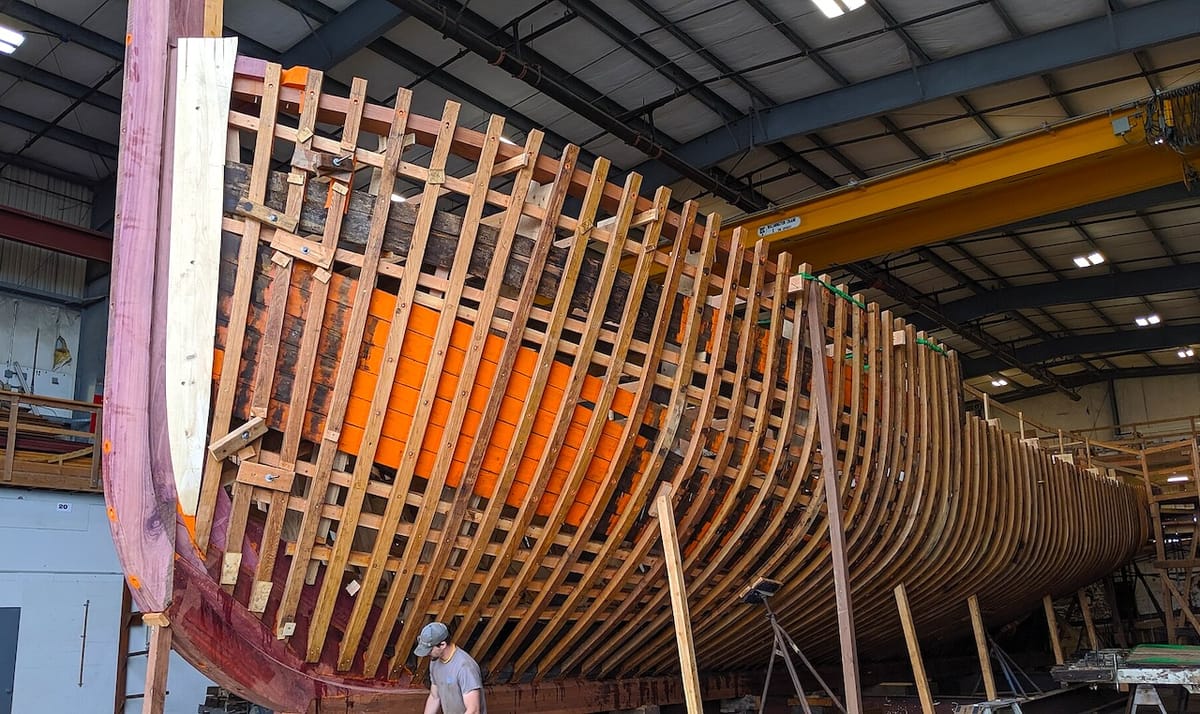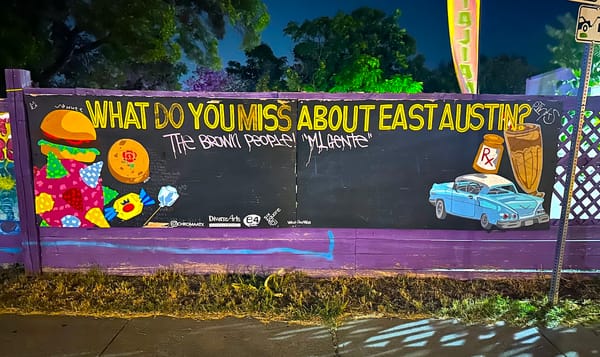let’s build a cooperative, step 5: conduct a feasibility study
how many meetings does it take to be an owner?

Welcome back to my series on how to start a cooperative! This is a 10-step experiment moving from idea to launch. Step 1 covered the idea and brought together a team of cooperators. Step 2 clarified those needs into a potential business. Step 3 defined the vision and got our future members excited. Step 4 made a quick stop to help this group decide their process for decision-making. We’re going to need all those things for step 5: conducting a feasibility study. Here’s our table of contents:
Introduction to cooperatives
Building a cooperative: step by step guide
- Collect information, clarify needs, and assemble your founding members.
- Discuss needs and vision; coordinate organizing and business research.
- Consolidate a clear vision.
- Design your decision-making process.
- Conduct a feasibility study.
- Create a business plan.
- Define roles.
- Convene your first cooperative owners meeting.
- Convene your first board meeting.
- Begin operations!
Real quick stop before we put on our green visors and sleeve garters and start crunching numbers. I’m an amateur cooperator, not a lawyer. Please be advised at your own risk.
set up the study
This is where the sneakers meet the walking path. Well, we’re getting really close to starting our walk. We’ve taken all our ideas and built a plan. Now it’s time to stress-test it. A feasibility study is vital for every business, cooperatives included. Does our plan from Step 3 make sense to everyone? Does everyone agree that this is the way forward? Most important for our new cooperative’s purpose: are we willing to put our own money into this?
I added another cooperative guide to my research pool, titled Local People, Local Solutions. It’s written for First Nation cooperatives in Saskatchewan but I loved the guide. They write that a feasibility study is “an opportunity to make sure you build your co-operative business to incorporate and reflect First Nations spirituality and values into the business.” Your cooperative may not include Indigenous or First Nation members. Even still, a feasibility study is a chance to infuse your members’ values and goals into the co-op.
Together we’ll define the purpose of our business. Then, we’ll bring in some experts. Many of the guides recommend hiring a coop consultant or other expert to help with analysis. They can conduct a more impartial review of your plans than your “yes, and” group might allow. Some cooperatives even use consultants to lead this entire 10-step guide. If you have the funds, go for it. If you’re on the other end of the wealth spectrum, an internal group also works. Create a subcommittee to take the lead on a financial study. Another group, or this same one, can also conduct a market study. A third group could come up with a risk assessment. With these studies in hand, we’ll reconvene and make a decision as a full group.
financial analysis
This subcommittee will go through our plans and start putting numbers to them. How will cover startup costs? Will we use member funding, grants, bank loans, stolen bitcoin, or more than one of the above? What will our income look like over the next few years?
What expenses will we have over that same period? What special equipment will we need? Are we starting small and rent-free in someone’s home, or do we need an office or storefront? What licensing costs or permits will we have before we open our doors? What kind of advertising will we need?
For our consulting cooperative, our overhead might be pretty low. We could choose to start at our individual home and grow into an office when we need one. We could centralize office supply costs by shopping at the business Costco. How much is a business membership at Costco? Look it up and put it on the list!
What does member equity look like? Once we’ve estimated the startup costs, we’ll divide it up among potential members. Each member can buy a share (say for $1000). We’d use that money to start the business. If shares are astronomical, find ways to offset them. Some cooperatives offer sweat equity memberships for people who can’t afford to invest. If needed, we could also start a member drive for the needed capital.
Put all this information into a presentation or a report so people can review it all. This is a big deal with the potential to affect people’s livelihoods! We don’t want to rush this step.
conduct market research
Now it’s time for market research. Hansen, Coontz, and Malan at The Center for Cooperatives sum this up best. In Steps to Starting a Worker Co-Op, they write, “The basic questions are: ‘Can it be produced?’ and ‘Will it sell?'”
They recommend meeting with other cooperatives in the region. How do they operate? How did they get started? We could also learn from the successful companies we found in our business research. How do they operate? They don’t have to be a cooperative to be comparable, but they should be about our size. Our goal is to understand how other businesses in our industry survive.
We also need to learn about our potential customers. What is the makeup of our community? What kind of purchasing power do our customers have? What kind of contacts (or even contracts) will we bring into this new business?
assess risk
We can’t predict everything that could befall our new cooperative. But we can know some things. What could harm our business? I’ve been a consultant for a few years now. I’ve dealt with canceled contracts, shifting markets, and months with low income. What else could jeopardize our success? We’ll call it “doomstorming” and get everyone to join in. It’s good to focus on the positives, too. What new niche will we fill? How can we amplify what we’re great at?
Does our cooperative already have all the experience and skills we need to do this well? Who can we bring in to fill in our gaps? This is also the time to check whether our future members are still interested about the coop. The cooperative approach to work is one where everyone is a leader. That life is not for everyone. As we get into funding our cooperative, now is the best time to decide if it’s for you.
decision time
Five steps in and you may be asking, “is this thing ever going to get off the ground?” That’s exactly what the feasibility step should answer! In fact, every step so far may feel like a “make or break” step. Starting any business costs money and valuable time. Things can get contentious when conflict erupts.
Once you finish the assessments, meet to discuss the reports and their findings. I’d recommend each group have both a report and a presentation to make it easier for people to digest. Members need their questions answered. We should know what investments we’d need to make. We should have both optimistic and pessimistic expense and income projections.
Will we have enough revenue to cover our expenses for the first 3-5 years? Are all our members on the same page about the co-op’s process and expectations? Do we all know the opportunities and needs we’ll have after we launch? By this point everyone should be able to commit to the collective risks and be willing to chip in.
case study: Port Townsend Shipwrights Co-Op
The Port Townsend Shipwrights Co-Op started with eight “fiercely independent” shipwrights. Dieter Loibner wrote about their 40-year history for Professional Boatbuilder magazine. Shipbuilding is seasonal work for many in the area. These early owners put out an ad for interested builders to join their cooperative. The Center for Cooperatives guide says that it took the co-op “about a year” to start their business. I know, that’s less time than it’s taken me to write this co-op series. They purchased an expensive ship saw, then they needed to house the saw, and they grew from there.
In that first year, the shipwrights met with workers at other cooperatives. They figured out an hourly rate that would support co-op owners and grow their business. Over time, they added locations, bought equipment, and offered higher wages and benefits. The cooperative now has 12 owners among 60 employees. What started with a saw helped them grow into a big player in repairing and restoring ships. The Western Flyer was a huge Washington ship from the 1940s. The project came to them in part because they had a massive covered space where it could be restored.
My favorite part of the article was when they asked an employee if he ever thought about becoming an owner. “How do I put this? No. They go to 65 meetings a year. That’s not what I want to deal with. They have weeklies, monthlies, and an annual meeting. I’d rather be busy working.” Running a co-op can be a lot of work! Starting a co-op, and running one, isn’t for everyone.
We covered a lot of fact-finding and put our new decision-making tools to the test. Our future owners know the benefits, have assessed the risks, and are ready to buy in to the business. Now that our feasibility study is complete, we can move on to our business plan in step 6.



